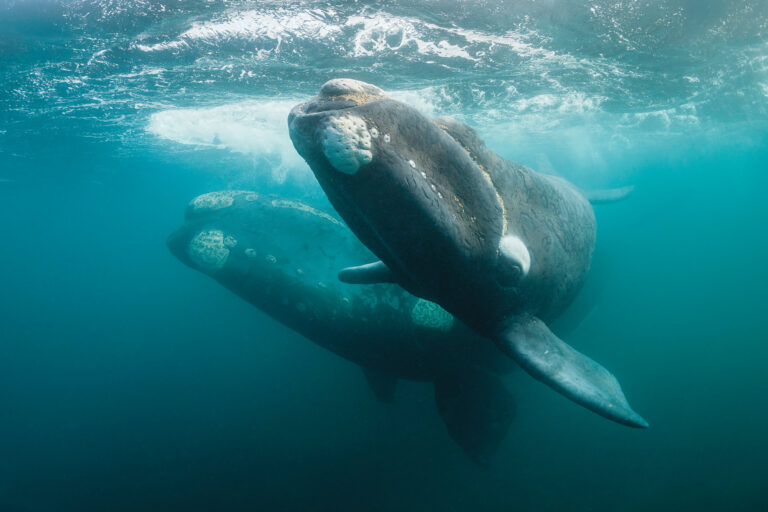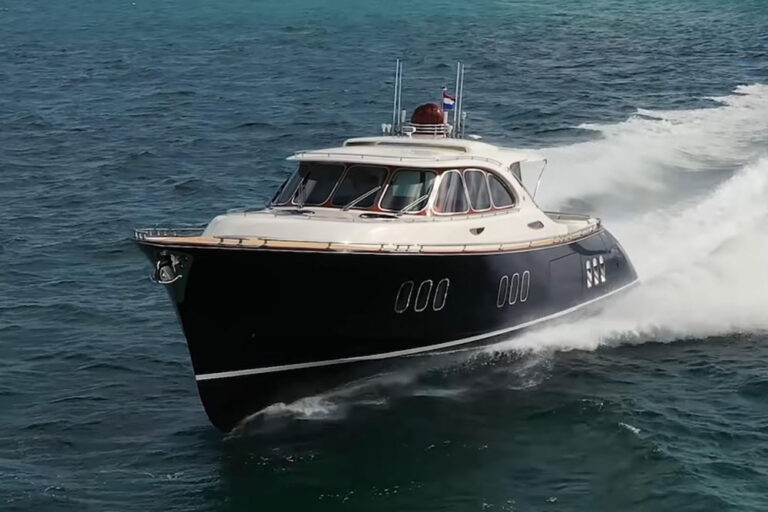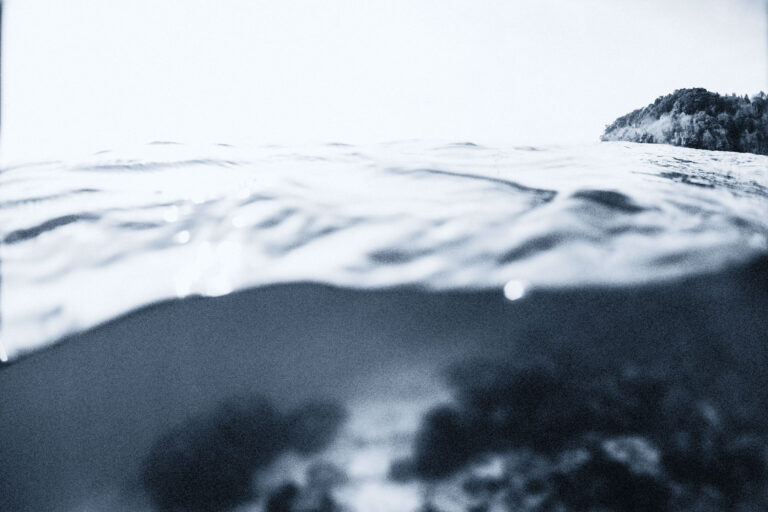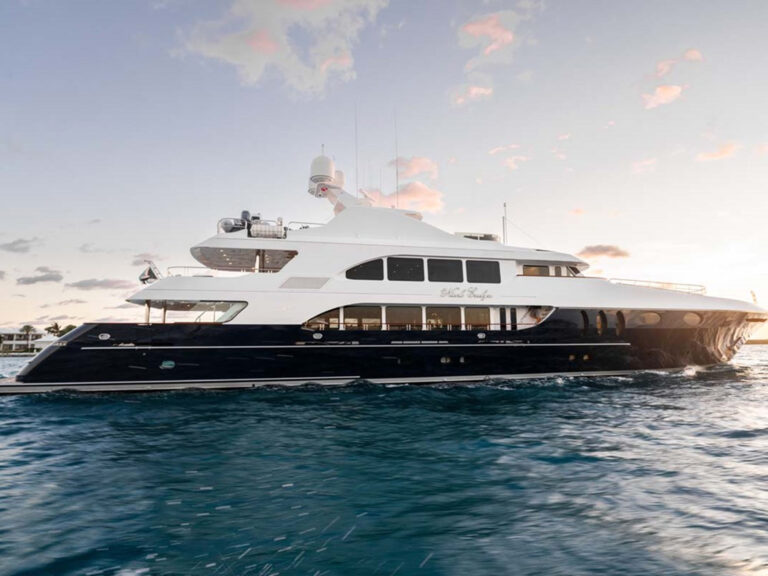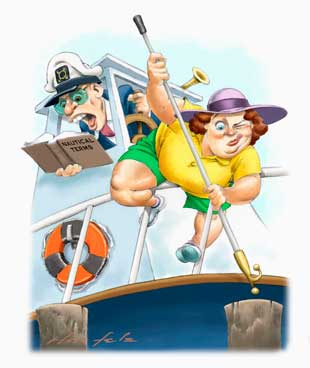
June Telltales
I was recently helping the dockmaster tend to a new arrival when I spotted trouble. A skipper who had donned a captain’s hat was charging the dock while his wife hung from the bow pulpit holding a fully extended boat hook as though she were preparing to harpoon a whale. The dockmaster and I took cover behind a piling as the skipper jiggled his joystick and ordered his mate to “put out the bumpers.” It occurred to me that it had been too long since I had reviewed Coyle’s “Language of the Waterman.”
Fenders — I suppose the thinking is that if it’s OK to call a car’s fender a bumper then it’s fair to call a boat’s fender the same — not! Unlike a car bumper, a boat’s fenders should be detached and stored while under way. TIP: Boat fenders may be round, cylindrical, flat or even an old tire but they should never be shaped like mermaids.
Bow, Stern, Port and Starboard — The bow is usually pointy — look for the anchor. The stern is almost always flat and displays the boat’s name — look for wordplay involving the owner’s wife (south Florida) or an Indian name (New England). While looking toward the bow you will always find the boat’s port side on the left and starboard side on the right. TIP: They’ll remain in the same place if you turn around.
Cleats and Chocks — Cleats are used to secure lines which may or may not pass through chocks. You will often find cleats and chocks at the bow and stern. Spring cleats are found to port and to starboard no matter the season. TIP: Euro-style variations on the proper Herreshoff cleat may also be used for drying spaghetti.
Porthole — A porthole is a small window in a vessel’s topsides but should never be referred to as such. It is never shaped like a Vienna sausage, a shark fin or a French door. If you own a travel trailer you can have “windows.” TIP: You go up or down a hatch and in or out a door.
Topsides — Topsides extend from the waterline to the sheer, where you will likely find a rail for the hand or the toe. For example you might say “the window … er, porthole … in the topsides looks stupid.” Topsides are not the deckhouse, although if you were to “go topside” you most likely would be headed there. TIP: The toe rail is nowhere near the boot top.
Flare and Flam — Flare is the concavity in the forward sections between the chine and the sheer. Flam is the flare in the flare near the sheer. Some folks believe the more flam the better — in a Dolly Parton sort of way. TIP: If you’re cruising North Carolina, flam would be a poor choice of words.
Sole and Ceiling — Aboard a boat you might be standing on a sole unless you are standing on deck. If you were standing on the bridge or in the cockpit you might be standing on either. Inside a boat the ceiling is not overhead but to port or starboard. TIP: The overhead is overhead.
Seacocks, Scuppers and Ball Valves — This is an easy one … ball valves have balls and seacocks have … well, they don’t have balls. Both might let water in or out while scuppers only let water out, unless of course you’re sinking or they’re not fitted with flappers. TIP: Flappers do not wear short skirts, have bobbed hair and listen to jazz!
Abeam, Abreast, Aweigh, Belay — There is no need to learn words like these unless you’re Patrick O’Brien or wish to be an extra in Pirates of the Caribbean 4. Anyone else using these words should go immediately to a discount marine store and buy a cheap captain’s hat that is one size too small. TIP: Consider a cheap captain’s hat an “aid to navigation” that means “keep your distance!”





